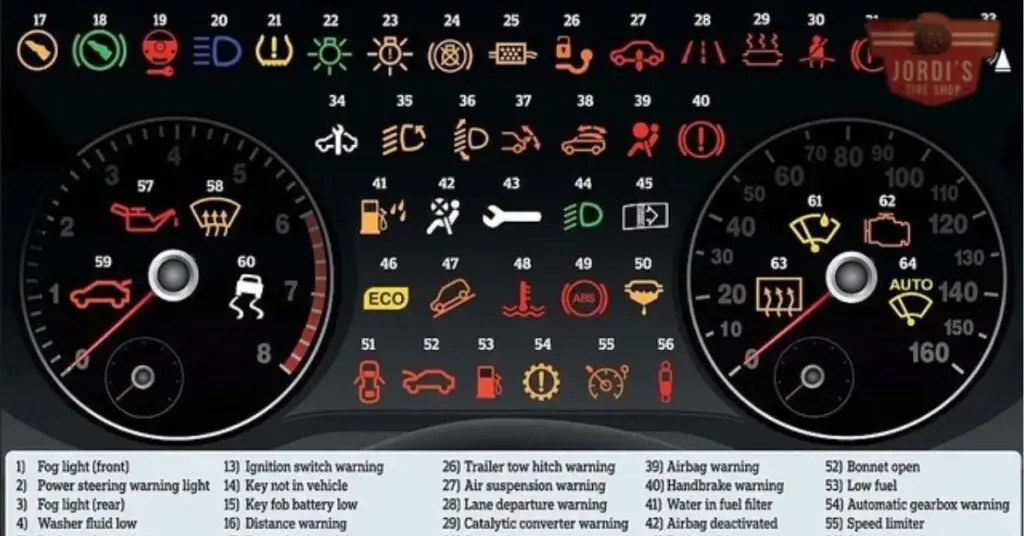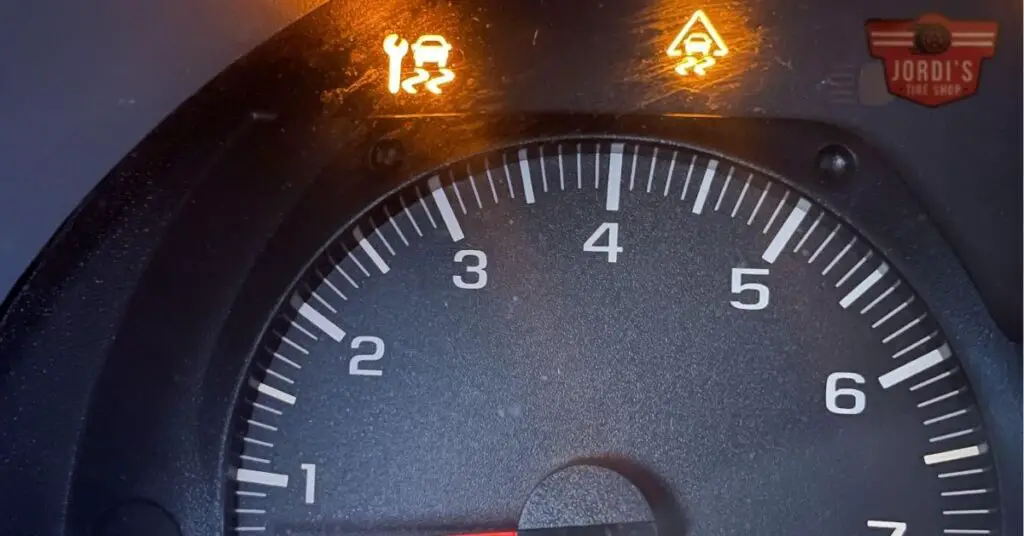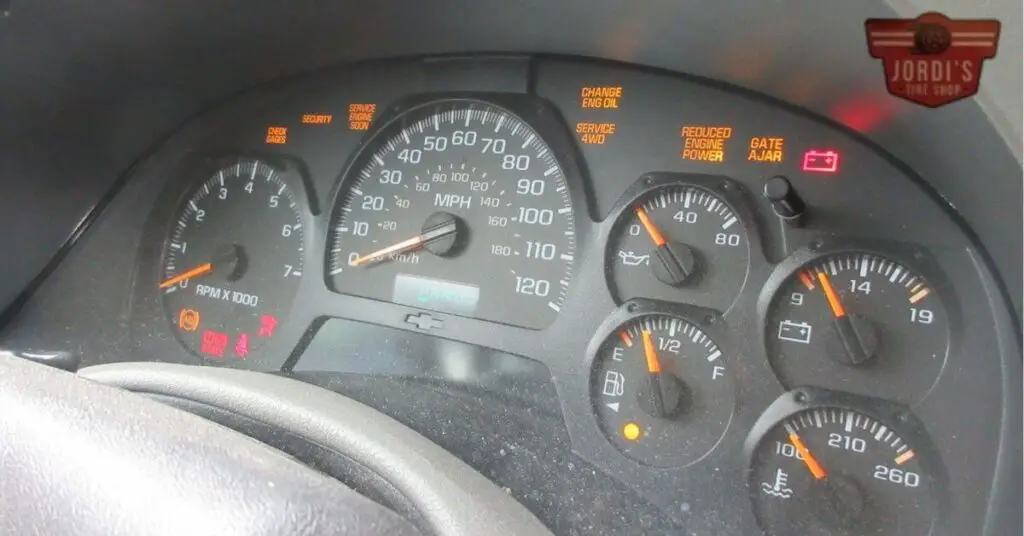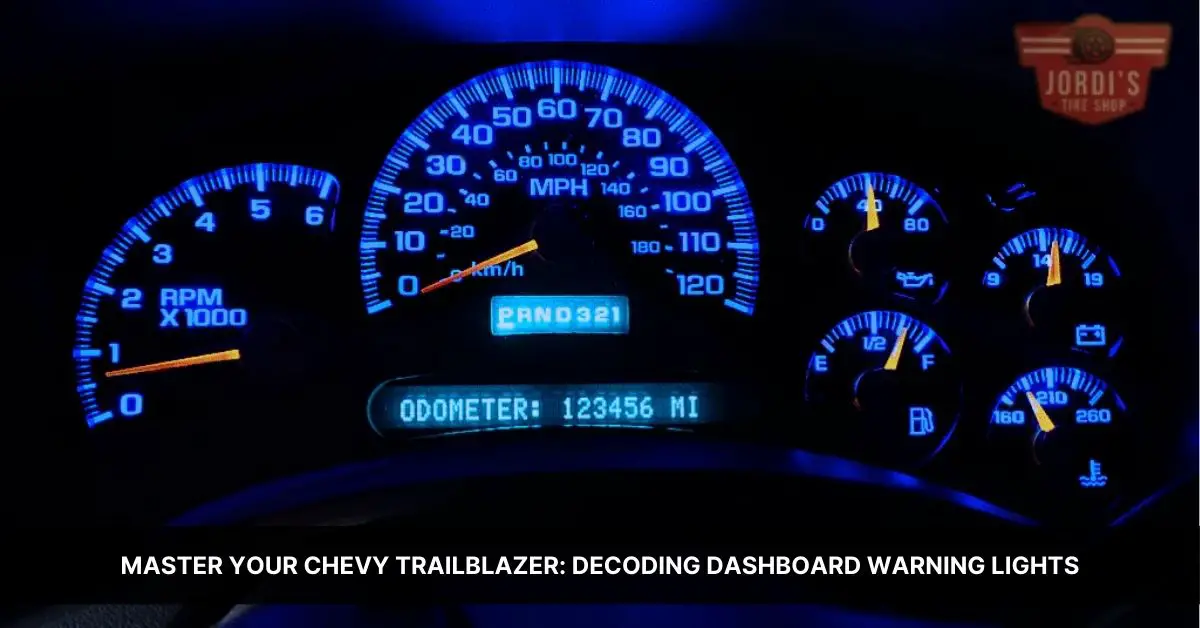You’re cruising down the road in your Chevy Trailblazer when suddenly, a warning light flickers on your dashboard. Your heart skips a beat. Is it a minor glitch or a sign of a major problem? Don’t fret. We’re here to shed light on this mystery.
Understanding your Chevy Trailblazer’s dashboard warning lights is crucial for your vehicle’s health and your safety. It’s like learning a new language, where each symbol tells a different story. Let’s break down these cryptic codes together and keep your Chevy running smoothly. Stay tuned as we illuminate the path to safer and worry-free driving.
Understanding Chevy Trailblazer Dashboard Warning Lights

Let’s investigate deeper into comprehending the Chevy Trailblazer’s dashboard warning lights.
Importance of Dashboard Warning Lights
Dashboard warning lights in your Chevy Trailblazer aren’t merely decorative. But, these vivid illuminations provide timely updates on your vehicle’s health. Acting as an interpreter of your car’s internal systems, they reveal imminent issues, preventing breakdowns and costly repairs. Indeed, these lights are more than just simple visual cues. They’re essential tools for proactive vehicle maintenance and more importantly, for safe driving.
Decoding Dashboard Symbols and Colors
A Chevy Trailblazer’s dashboard houses an array of symbols and colors. Each sign, with their distinct hue, conveys a unique message about the vehicle’s condition. For instance, a red flashing light typically indicates a severe issue requiring immediate attention. Contrastingly, an amber or yellow light denotes a less urgent problem, albeit, it still calls for prompt action. Then there are green and blue lights, which usually signal the car’s normal operations, such as the activation of headlights or cruise control.
Understanding these signals can be like cracking a visual language. The key is to familiarize yourself with the most critical symbols, namely the Brake System Warning Light, Engine Oil Pressure Warning Light, Battery Light, Check Engine Light, and Coolant Temperature Warning Light. Remember, your Chevy Trailblazer uses these symbols to communicate vital vehicle health information. By learning this language, you equip yourself for informed responses, which can eventually lead to safer and more reliable driving.
Common Chevy Trailblazer Dashboard Warning Lights

Identifying and recognizing dashboard warning lights is key in performing proactive vehicle maintenance. Here, you’ll learn about a few common warning lights you may encounter in a Chevy Trailblazer.
Engine Warning Light
One of the most crucial dashboard warning lights is the Check Engine Light, often illustrated as an engine icon. This light illuminates when the on-board diagnostic system identifies an issue that could affect the vehicle’s emission levels. The problem can range from a loose gas cap to something more serious, such as engine malfunctions. Regardless, it’s important to get your car checked immediately, given emission problems can significantly impact your vehicle’s overall performance and fuel efficiency.
Brake Warning Light
Another light that you might see glowing on your dashboard is the Brake Warning Light. Typically displayed as an exclamation point within parentheses or as the word “BRAKE”, it alerts you of potential issues with the braking system. Often, it comes on when the parking brake is engaged, but when it stays on after releasing the brake, it may signify problems like low brake fluid level or a compromised braking system. Such issues could signal serious safety risks, making it essential for you to get your vehicle inspected at your earliest convenience.
Battery Warning Light
The Battery Warning Light, generally represented by an icon resembling a battery, warrants immediate attention as well, since it alerts you to problems with your car’s charging system. For instance, the battery may be running low, the alternator might be failing, or there might be a problem with the wiring. Ignoring this warning light could result in your car breaking down, so your car needs to be inspected promptly to prevent possible issues. Remember, understanding these dashboard warning lights ensures that you take the necessary steps to safeguard your Chevy Trailblazer’s longevity and your safety on the road.
Less Common Chevy Trailblazer Dashboard Warning Lights
In your Chevy Trailblazer, there are less common dashboard warning lights as well. While they might not flash as frequently as some others, their importance remains undiminished. Understanding these less common warning lights can help you identify and address issues in less frequently inspected, but crucial, areas of your vehicle.
Tire Pressure Warning Light
First up, it’s the Tire Pressure Warning Light. On your vehicle dashboard, this symbol appears as a horseshoe-like image with an exclamation mark inside. It lights up to alert you about low tire pressure, a situation that can impact vehicle handling and hence safety on the road. Conditions, such as a rapid change in ambient temperature or an unnoticed puncture, might cause this light to illuminate, suggesting your tires need attention. Immediate action such as inspecting the tires, refilling to the correct pressure, or involving a mechanic, is advisable to ensure your ride remains safe and fuel-efficient.
Coolant Temp Warning Light
Next is the Coolant Temp Warning Light. The symbol for this warning light, a thermometer immersed in liquid, might become illuminated when the engine coolant temperature is higher than it should be. This condition, if undetected or ignored, can lead to engine overheating that might cause serious engine damage. It’s essential to stop the vehicle and let the engine cool down if you notice this light on your dashboard. Remember, it’s advisable to consult a professional promptly for a thorough inspection to identify and fix the root cause.
Fog Lamp Warning Light
Finally, we have the Fog Lamp Warning Light. This warning light, represented by a headlamp icon with wavy lines in front of it, indicates that your vehicle’s fog lamps are switched on. This light may seem less of a warning and more of an informational indicator. It becomes essential in situations of reduced visibility, such as dense fog or heavy rain, where these specifically designed lights help increase visibility and signal your presence to other road users. Just remember to switch the fog lamps off when normal visibility conditions resume, to avoid dazzling other drivers.
How to Respond to Chevy Trailblazer Dashboard Warning Lights

Having insights into Chevy Trailblazer’s dashboard warning lights, it becomes paramount to understand how to respond when they flash.
Immediate Actions
Acting promptly and appropriately on dashboard warning lights can prevent minor problems from escalating into serious issues. For instance, in the case of a Brake Warning Light, your immediate action involves checking if your parking brake is released. If it is, and the light persists, it’s an indication of potentially more severe braking system problems. Here, you’d want to reduce your speed, avoid heavy braking, and drive carefully to the nearest service station.
Should the Battery Warning Light illuminate, it indicates a charging system issue. Quick to act, you’re advised to turn off all unnecessary electrical loads, such as the heater or radio. You can drive a short distance, but should avoid trips that are too long as your vehicle might stop running.
Reacting to a Tire Pressure Warning Light involves immediately checking your tire pressure and adding air if required. If the Coolant Temp Warning Light is on, pull over as soon as it’s safe. Let your engine cool down before checking the coolant level.
When to Consult a Professional
Determining when a professional’s expertise is needed may save valuable time, money, and prevent further damage. If the Check Engine Light flashes, for example, it can imply a plethora of underlying issues varying in severity. A steady light typically signifies a less urgent issue, allowing you to drive to a nearby service center at your earliest convenience. But, a blinking light necessitates immediate professional attention to prevent costly consequential damages.
The Brake System Warning Light, remaining lit after releasing the parking brake or appearing as you drive, indicates important brake system problems. Hence, consulting a professional mechanic is highly recommended.
Your Battery Warning Light staying on after starting your vehicle or appearing during a drive is usually a clear sign of battery or alternator issues. A professional diagnosis is warranted in this case.
Likewise, if your Coolant Temp Warning Light consistently illuminates, it’s likely indicating an overheating engine, which a professional should address promptly to prevent serious engine damage.
The role of professionalism, hence, remains imperative for correct diagnoses and appropriate responses to your dashboard warning lights.
Maintenance Tips to Prevent Dashboard Warning Lights

Maintaining your Chevy Trailblazer effectively can help preempt many dashboard warning lights. Let’s investigate into some maintenance strategies that you can use to keep your vehicle at its best.
Regular Vehicle Check-up
Routine vehicle check-ups are essential for the longevity of your Trailblazer. Regular inspections enable you to detect problems in their initial stages, often before they trigger dashboard warning lights. For instance, attending to issues within the braking system correctly, before the Brake Warning Light illuminates, promotes driving safety and the health of your Trailblazer.
Professional mechanics have the training and resources to spot these anomalies. They’ll inspect systems such as the engine, transmission, and brakes, along with components like tires, belts, and hoses. Besides, to harmonize with the Check Engine Light’s purpose, frequent oil changes, and emission checks maintain your vehicle’s overall health and efficiency.
Keeping an Eye on Tire Pressure
Regular monitoring of the tire pressure serves to prevent the illumination of the Tire Pressure Warning Light. Not only does adequate tire pressure contribute to optimal vehicle performance, but it’s also a key strategy in reducing the wear and tear of tires. Plus, it maintains fuel efficiency and keeps you safe on the road.
You can use a simple yet effective tool known as a tire pressure gauge to measure tire pressure. For the most accurate readings, consider checking the pressure when the tires are cold, typically before driving or at least 3 hours after the last drive. The recommended tire pressures for your Chevy Trailblazer are found in the vehicle’s manual. So, you should adjust the tire pressures as necessary, keeping them close to the suggested levels.
Remember, diligent vehicle maintenance goes a long way toward preventing the illumination of dashboard warning lights. Regular vehicle check-ups and tire pressure monitoring are essential in extending your Chevy Trailblazer’s lifespan and ensuring your safety on the road.
Conclusion
So, you’ve learned the language of your Chevy Trailblazer’s dashboard warning lights. You’re now equipped to interpret what your vehicle is trying to tell you. It’s no longer a mystery when the Brake Warning Light shines or the Check Engine Light flickers. You’re prepared to tackle these issues head-on, ensuring your vehicle’s health and your safety. Remember, red means stop and address the issue immediately. Yellow or amber? It’s a heads up. And green or blue, you’re good to go.
But it’s not just about reacting. It’s about being proactive. Regular check-ups and maintenance can prevent these lights from showing up in the first place. Keep an eye on your tire pressure and make sure your vehicle gets the professional attention it deserves. After all, understanding your dashboard warning lights is a key part of responsible vehicle ownership. So, drive confidently, knowing you’re well-versed in your vehicle’s communication. Stay safe on the road!
1. Why are dashboard warning lights important?
Dashboard warning lights are vital because they provide information about the vehicle’s health, acting as interpreters of the car’s internal systems. Understanding these lights can lead to more reliable driving and inform drivers about potential issues that need immediate attention.
2. What do the colors of dashboard lights signify?
The colors of dashboard warning lights carry specific meanings. Red indicates severe problems that require immediate attention. Yellow or amber lights signal less urgent problems, while green and blue lights typically represent normal operations.
3. What are some common dashboard warning lights in a Chevy Trailblazer?
Common dashboard warning lights in a Chevy Trailblazer include the Check Engine Light, Brake Warning Light, and Battery Warning Light. These lights alert drivers to potential issues related to emissions, braking systems, and the car’s charging system, respectively.
4. What should you do when a dashboard warning light shows up?
When a dashboard warning light illuminates, it’s important to act promptly to prevent minor problems from escalating. The response may range from checking the parking brake or tire pressure, or turning off unnecessary electrical loads, depending on which light is on.
5. When should I consult a professional mechanic?
If a steady Check Engine Light, persistent Brake System, or Battery Warning Lights appear, it’s advisable to consult a professional mechanic. Especially if the Check Engine Light is blinking, immediate attention is necessary as this may indicate a serious issue.
6. What are some maintenance tips to prevent dashboard warning lights?
Regular vehicle check-ups are key to prevent the illumination of dashboard warning lights. Professional mechanics can inspect systems and components to ensure the vehicle’s health. Further, maintaining appropriate tire pressure enhances performance while contributing to safety and fuel efficiency.
Related Posts:
- Decoding Your Chrysler Pacifica Dashboard Warning Lights: A Comprehensive Guide
- Mastering the Acura MDX Warning: A Comprehensive Guide on ‘Check SH-AWD System’ Fixes
- Master Your Chevy Trailblazer: Decoding Dashboard Warning Lights
- Understanding the “50 State Emissions”: Your Guide to Cleaner Driving







